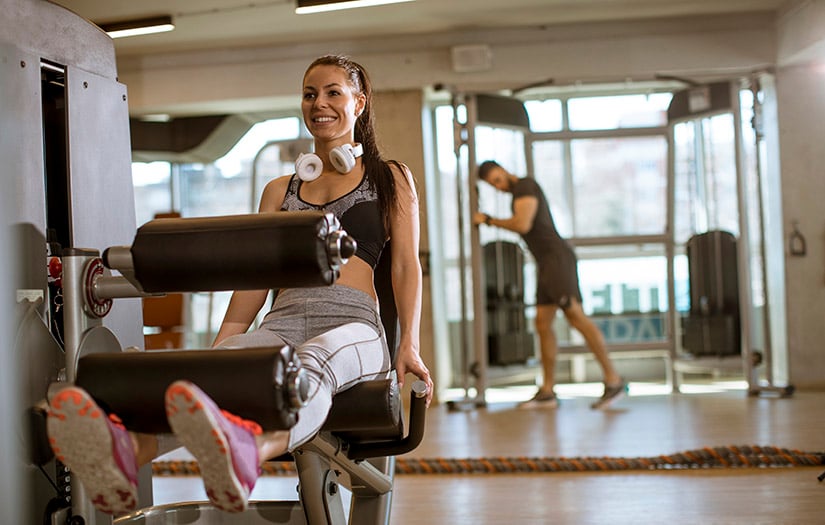To truly get the most out of your workouts, you must know which muscles are worked and activated when you use certain machines.
For the Seated Leg Curl and Prone Leg Curl, there are differences in hamstring muscle recruitment.
But did you know that these machines put you in unnatural movement positions and that there is virtually no carryover when performing the machine-based movements of the Seated and Prone Leg Curl machines?
If you are exploring the wide world of Corrective Exercise, this content will help you become that much closer to mastering movement.
Question
What is the difference in hamstring recruitment when using the Seated Leg Curl where the hips are flexed, compared to the Prone Leg Curl where the hips are almost extended?
Answer:
There are functional and mechanical differences between these two machines. I would like to preface this answer by begging the question of your purpose in including these exercises when designing a program.
There is certainly a role for these types of machines as well as others in certain situations, but in the grand scheme of movement, fitness, performance and functionality, the hamstring machines provide little utility. There is no carryover or benefit in a movement sense with these machines because there are hardly any situations when the hamstring moves in the fashion that these machines train them in.
Putting someone on a machine like this breaks a rule, the R-C Factor, of body movement and mechanics. The Resistance-Contraction Factor is about the balance of the contracting (agonistic) musculature against the antagonistic musculature. For effective and safe movement, the resistance factor has to be just as strong as the contraction factor. If this is out of balance, overcompensation occurs in surrounding musculature to pick up the slack, which greatly increases the risk of injury due to overuse or lack of synchronicity during movement.
For instance, during a bicep curl, the triceps have to resistively contract just as hard as the biceps so that the bicep doesn’t rip out of the arm and the shoulder doesn’t have to pick up the slack, which can lead to injury.
Now here’s the problem: the musculoskeletal system operates like an orchestra. There is never just one muscle firing; there are muscle groups that work together as a team to execute movement. If you happen to fix or mechanically inhibit a muscle group, you put a handicap in performance. This would be analogous to not having enough players to play the game but playing anyway. One of the inherent problems with machine training is they usually fix one or more of the contributing muscle groups.
For example:
Chest Press disrupts scapular rhythm, usually results in overcompensation in the shoulder joint.
Leg Extensions disrupt hamstring contraction, results in overcompensation of the quads stressing the patellar tendon.
Preacher Curls disrupt the triceps contraction, usually results in overcompensation of the bicep tendon or shoulder joint or both.
Hamstring machines disrupt quadriceps contraction, which can be compensated by its tendon at the distal attachment or by the glutes tightening the hip complex. They also gradually detach the communication the hamstrings have with the rest of the musculature when movement has to be executed due to the isolative nature of training on such machines.
Now to answer your question, there is less hamstring recruitment with the seated leg curl machine. This is due to the fact that not only the hamstrings are fixed, but the quads are usually pinned down by a cross bar and become fixed as well.
The movement then has to be picked up by the glutes, particularly at the site of the ischial tuberosity, which is an already tight area for most people. The lumbar spine is also forced into hyperlordosis to execute the movement, which can jam the facet joints in the spine if heavy loads are used. The fact that the hip flexors are in the shortened position also facilitates a lordosis to occur.
The prone hamstring curl machine gets a better hamstring recruitment and is a better bet because only the quads are fixed, and the hamstrings can move more freely through a range of motion. There can tend to be the same recruitment of the lumbar spine going into hyperlordosis as well as hip flexor recruitment again if the loads are heavy, which will be evident when the person begins to rise off of the bench.
These machines aren’t totally useless. There are instances in rehabilitation, fine tuning the length tension relationships in the body and other situations when these machines can be useful. They should, however, only be done once in a while, and machine training in general should comprise only a small percentage of your exercise selection when designing programs.











